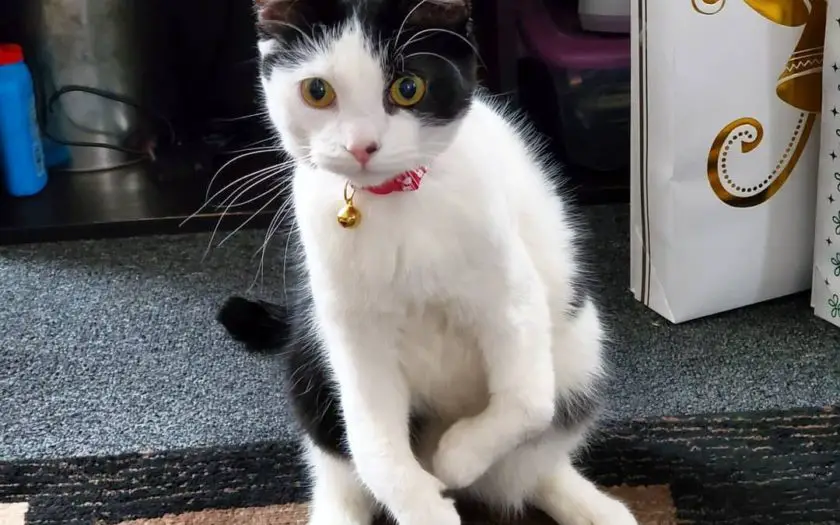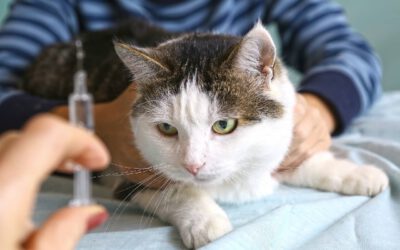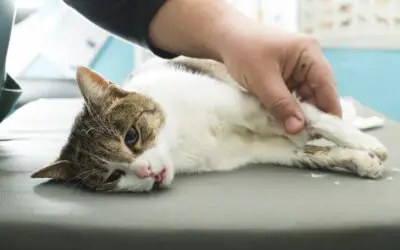Feline hypoplasias are among the least-known deformities among felines, but these conditions have a significant impact on the afflicted cat’s quality of life. Hypoplasia is a medical term for the incomplete development of a body part. The radial (RH, affecting the front legs) and femoral (FH, affecting the hind legs) variants are hereditary birth defects that prevent the bones in the legs from developing correctly.
Cats with such conditions are also known as “Squittens” or, more informally, as “twisty cats”, a name derived from the fact that the legs are shorter and sometimes twisted in an abnormal shape. Such conditions are also associated with polydactylism – a term that indicates a cat has more than the usual number of toes. Whilst RH/FH are sometimes inappropriately termed as polydactyl, they are, in fact, different conditions.
This article will discuss some of the common challenges that cats with RH and FH face. If you own such a cat, the information on this page will also give you some ideas on how to help your disabled cat get through day-to-day life.
Common challenges for cats with hypoplasia
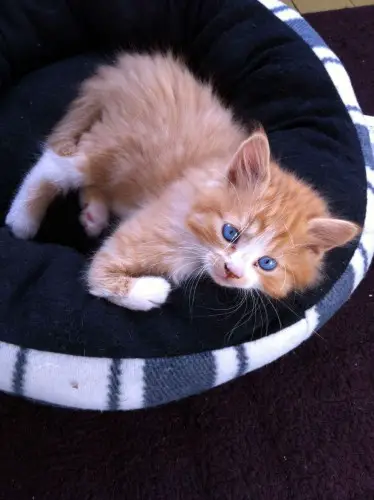
As you can probably imagine, living with legs that don’t work correctly presents some unique challenges. Here are some of the most common problems that cats with RH/FH might need your help with:
Walking
Most cats with radial or femoral hypoplasia will adapt to their disability over time, allowing them to get around quite comfortably. Such cats will typically cope by walking on their elbows, crouched, with a rocking gait.
In cats severely affected by RH, the legs are so impaired that they can only push themselves forward with the hind legs while using their front end like a steering wheel.

Climbing
Climbing or jumping down from objects can be challenging or even downright impossible for severely affected animals. Since the legs are too weak to pull up and absorb the kinetic shock from landings, a cat with RH/FH will have issues using a scratch tree. Some cats with disabled front legs can adapt to this challenge by teaching themselves how to climb down from objects backward.
Litter box troubles
Disabled cats will typically find the use of litter boxes challenging, with the degree of difficulty depending on the severity of their condition. A large litter box with a wide opening and lowered sides might prove easiest to use, but since each cat is unique, you will likely have to experiment before finding something that works. The provision of litter on an Inco/puppy pad can prove helpful for severely affected animals.
Going outdoors
Unless you have a fenced-off yard or an outdoor cat tent, you should never let a disabled cat go outside unsupervised. The nature of this complication makes it very difficult for them to survive outdoors and puts them at significant risk of injury, so you will have to come to terms with the fact that this kitty will always remain an indoor cat.
While the lack of outdoor activity could be a real disappointment for the owner(s), most cats with RH or FH can be perfectly happy indoors as long as you provide them with enough challenge and fun. We highly recommend giving a disabled cat plenty of indoor stimulation; play games with them, make frequent time for cuddles, and try to find a few toys and puzzles that your cat likes to use (or make some yourself).
If you have concerns that your cat is stressed due to being kept indoors, speak to your local veterinary clinic for advice on what you can do.
How to care for a cat with Radial or Femoral Hypoplasia
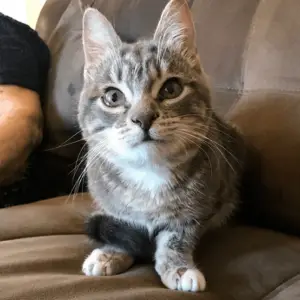
Caring for a disabled cat requires dedication. To the right person, this can also be very rewarding!
If you already have an affected cat under your wings, here are a few tips to help make life easier for your kitty:
- Rough surfaces like rugs and carpets will make walking a little easier because they provide traction. Hard-wood floors make things more difficult.
- Build ramps to things like feeding bowls and litter boxes to make them more accessible
- If you want accurate medical advice, you may have to search for a veterinarian who knows about RH and FH. These conditions are very rare, and most vets do not have much knowledge of the topic. You may even want to consult multiple specialists, including an orthopedic.
- Inspect the legs daily for any signs of trauma.
- If you own multiple cats, be sure to keep an eye out for signs of dominance, aggression and other inter-cat dynamics. Cats that live together tend to form a hierarchy, where the stronger cats may attempt to dominate the weaker ones. Be sure to provide plenty of resources around the house (food and water bowls, litter trays, beds etc.) as dominant cats can “resource guard” and prevent weaker cats from accessing these things.
- If you live in a building with multiple floors, make sure to prevent access to stairs, as they are bound to get a disabled cat in trouble.
- If you see your cat venturing into high places, gently lift them up and put them back on the floor. Doing so prevents them from jumping down, which may put them at risk of injury.
- If your cat regularly visits high places, place a few cushions or blankets on the floor to soften their fall.
- Desex your cat to make sure the genes are not passed on to their offspring. Affected cats should never be bred from, as RH and FH can worsen from one generation to the next.
- Instead of a vertical scratch tree, try to place smaller scratchable items on the floor or walls. For example, carpet samples or finely corrugated cardboard lain flat on the floor can make an excellent scratching substitute.

Find support
Radial Hypoplasia and Femoral Hypoplasia are such rare conditions that you probably won’t find much recognition among other cat owners. Thankfully, there are plenty of cat forums on the internet where you can meet fellow owners of special needs cats and find support. Building a trusting relationship with your veterinarian can also ensure your pet promptly receives any treatment or behavioral advice they may need.
Hypoplasia and ethical breeding
It should be noted that, although social media posts may make these disabled cats coveted, responsible cat breeders will not deliberately breed kittens to look this way. The gene default may occasionally happen at random or through accidental mating. Still, if a breeder is advertising affected kittens for sale and promoting this condition as a benefit, that should ring warning bells for any potential new owner.
Sources:
https://americanpetsalive.org/uploads/resources/Austin-Pets-Alive-Twisty-Cat-FAQ-52F6.pdf
https://catwoodsporchparty.wordpress.com/2014/08/04/our-cat-with-feline-radial-hypoplasia/
https://vetexplainspets.com/feline-radial-hypoplasia/ Hasse et al. (2016) – Digging for known genetic mutations underlying inherited bone and cartilage characteristics and disorders in the dog and cat. Veterinary and Comparative Orthopaedic and Traumatology. 29(4) 269-76
Frequently Asked Questions
RH is a hereditary trait that is present from birth. A faulty gene leads to the incomplete
development of a bone in the foreleg – the radius. The severity of their disease depends on how
poorly this bone develops; in severe cases, it may even be completely absent. Whilst a distinct
medical condition to true polydactylism – a harmless condition where a cat has more toes than
usual – very mild cases of RH can present with specific extra-toes. This can be a valuable
marker of the affected gene in breeding populations, and affected cats shouldn’t be bred from.
The toes themselves may also look unnatural.
The condition is not painful in itself, but certain complications resulting from the deformities can
lead to pain (such as skin irritation, secondary infections or trauma from accidents). Many cats
learn to cope with their disability well, as it is all they know. But some cats can become stressed
if they cannot access their resources or appropriately release their energy! Tailoring their
environment to their unique needs can limit this stress.
Radial hypoplasia is the name for deformed front legs (also known as twisty legs) resulting from
incomplete development or absence of the radius (a bone in the forelimb). Femoral hypoplasia
is a deformity in the hind legs resulting from incomplete development or lack of the thigh-bone
(the femur).

